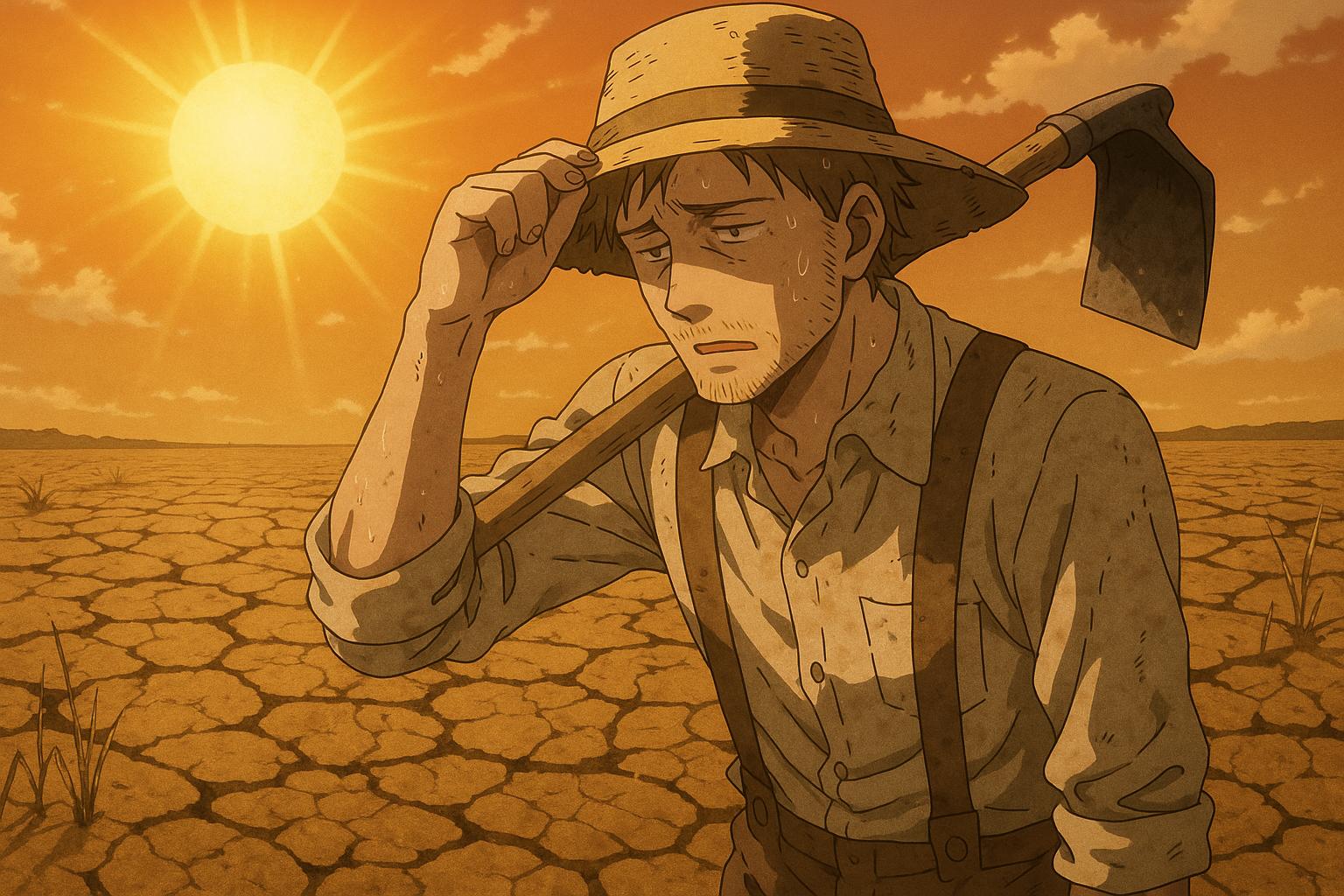As Europe grapples with an escalating climate crisis, a devastating drought has emerged as the most pressing environmental challenge overshadowing political discussions focused on ambitious green deals and carbon tariffs. The conditions across Northwestern Europe are alarmingly dry, with the spring of 2025 yielding the lowest rainfall witnessed in over a century. Countries such as Belgium, the Netherlands, Germany, and the UK are confronted with wilting crops and parched soils, as the crucial development period for staple crops unfolds in an unprecedentedly parched environment. Farmers who once cultivated vibrant fields now confront the grim reality of cracked, barren land, leading to a stark financial reckoning that is sending ripple effects through entire agricultural systems.
The European Union's climate models starkly illustrate the financial toll of extreme weather on agriculture, estimating an annual loss of €28.3 billion. In this latest bout of drought, a substantial share of these losses is tied directly to the failing weather, which has become increasingly frequent due to climate change. With farmers in regions like Lower Saxony and the Flemish plains witnessing their yields diminish daily, the lived experience of agriculture paints a far grimmer picture than isolated economic statistics. As one farmer near Bremen lamented, the struggle is not about adapting to climate change but merely surviving its relentless impact.
The implications for food security are turning increasingly dire. The EU’s agricultural output, which produced approximately 234 billion tonnes of cereals in 2024, stands on the precipice of significant decline as this year's yields are expected to plummet. The interconnectedness of Europe’s food systems means that disruptions in agriculture will reverberate beyond national borders, heightening concerns about supply chains that have already been destabilised by geopolitical tensions. In the UK, the early signs of strain are manifesting in rising wholesale prices for essential crops such as potatoes and carrots, where some farmers report water reserves dwindling to dangerous levels early in the season.
While drought's impacts are often gradual and less visible than other natural disasters, the economic ramifications are profoundly damaging. The European Central Bank has underscored the vulnerability of the Eurozone economy, predicting that droughts could slash economic output by nearly 15%—a warning bolstered by recent studies indicating that key agricultural regions may become less suitable for traditional crop production. As a result, insurance claims are mounting, subsidies are being diverted, and emergency responses are under discussion, all of which merely scratch the surface of a far deeper, systemic crisis.
Long-term strategies need consideration beyond emergency measures. The Common Agricultural Policy (CAP), which has long governed EU agricultural funding, appears less equipped than ever to address the modern challenges posed by an environment shaped by climate change. Historically focused on yield maximisation, the CAP must evolve to support farmers facing the dual pressures of escalating production demands and safeguarding environmental sustainability. A proposed shift toward a "Green CAP" underscores a growing recognition of the need for resilience and sustainability, yet farmers facing immediate drought conditions are finding that theoretical reforms fall short of practical support.
In the face of these harsh realities, numerous farmers are taking matters into their own hands, deploying adaptive techniques such as drip irrigation and the cultivation of drought-resistant crop varieties. However, this approach is not without limitations. The financial burden of implementing such innovations can be prohibitive, often out of reach for many small-scale farmers. An agronomist in the Netherlands aptly noted that while it is feasible to practise drought-tolerant farming, the idea of drought-proof agriculture is a myth.
The challenge is compounded by broader climate policies that often seem disconnected from the daily struggles of farmers. The EU, positioning itself as a leader on climate initiatives, seems to be neglecting the very sector that is most vulnerable to the shifting climate landscape. As pressure mounts, rural discontent is surfacing politically, evident in the rise of populist movements that prioritise agricultural concerns. Countries like the Netherlands and France are experiencing shifts in voter sentiment, while in the UK, the enduring effects of Brexit add another layer of complexity, particularly with muddled subsidy schemes.
The urgency for change is palpable, calling for agricultural policies that can effectively navigate the realities of climate change. In the immediate term, meteorological forecasts provide little hope, suggesting minimal rainfall in the weeks ahead, which could lead to catastrophic declines in grain yields and necessitate emergency imports. Long-term, Europe faces a crucial crossroad: the choice between a vibrant, resilient agricultural landscape supported by intelligent policies or a depopulated, corporatised farming model governed by bureaucrats with distant priorities.
For the countless farmers across Europe, the need is clear. As expressed by one weary British farmer surveying his arid fields, “We don’t need grand speeches. We need water—and policy that doesn’t dry us out further.” The current drought is not just a passing anomaly; it is a clarion call for urgent, transformative action in the face of a climate emergency that threatens the very fabric of agricultural life on the continent.
Reference Map
- Paragraphs 1, 2, 3, 4, 5, 6, 7, 8
- Paragraph 5
- Paragraphs 2, 3, 4
- Paragraph 6
- Paragraph 7
- Paragraph 4
- Paragraphs 5, 6, 8
Source: Noah Wire Services
